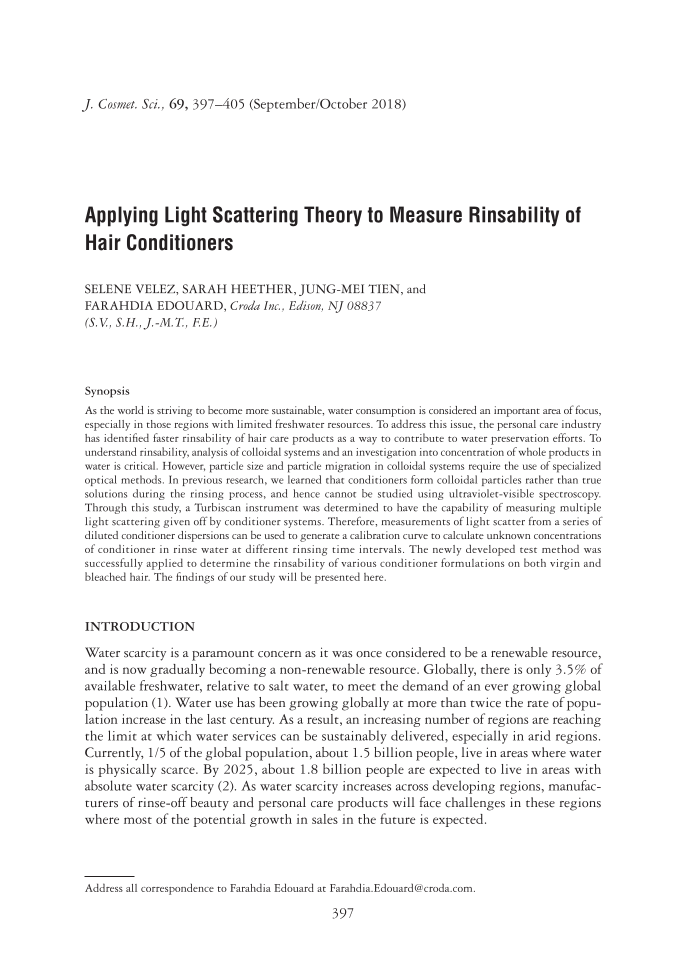
J. Cosmet. Sci., 69, 397–405 (September/October 2018) 397 Applying Light Scattering Theory to Measure Rinsability of Hair Conditioners SELENE VELEZ, SARAH HEETHER, JUNG-MEI TIEN, and FARAHDIA EDOUARD, Croda Inc., Edison, NJ 08837 (S.V., S.H., J.-M.T., F.E.) Synopsis As the world is striving to become more sustainable, water consumption is considered an important area of focus, especially in those regions with limited freshwater resources. To address this issue, the personal care industry has identifi ed faster rinsability of hair care products as a way to contribute to water preservation efforts. To understand rinsability, analysis of colloidal systems and an investigation into concentration of whole products in water is critical. However, particle size and particle migration in colloidal systems require the use of specialized optical methods. In previous research, we learned that conditioners form colloidal particles rather than true solutions during the rinsing process, and hence cannot be studied using ultraviolet-visible spectroscopy. Through this study, a Turbiscan instrument was determined to have the capability of measuring multiple light scattering given off by conditioner systems. Therefore, measurements of light scatter from a series of diluted conditioner dispersions can be used to generate a calibration curve to calculate unknown concentrations of conditioner in rinse water at different rinsing time intervals. The newly developed test method was successfully applied to determine the rinsability of various conditioner formulations on both virgin and bleached hair. The fi ndings of our study will be presented here. INTRODUCTION Water scarcity is a paramount concern as it was once considered to be a renewable resource, and is now gradually becoming a non-renewable resource. Globally, there is only 3.5% of available freshwater, relative to salt water, to meet the demand of an ever growing global population (1). Water use has been growing globally at more than twice the rate of popu- lation increase in the last century. As a result, an increasing number of regions are reaching the limit at which water services can be sustainably delivered, especially in arid regions. Currently, 1/5 of the global population, about 1.5 billion people, live in areas where water is physically scarce. By 2025, about 1.8 billion people are expected to live in areas with absolute water scarcity (2). As water scarcity increases across developing regions, manufac- turers of rinse-off beauty and personal care products will face challenges in these regions where most of the potential growth in sales in the future is expected. Address all correspondence to Farahdia Edouard at Farahdia.Edouard@croda.com.
Purchased for the exclusive use of nofirst nolast (unknown) From: SCC Media Library & Resource Center (library.scconline.org)








































































































